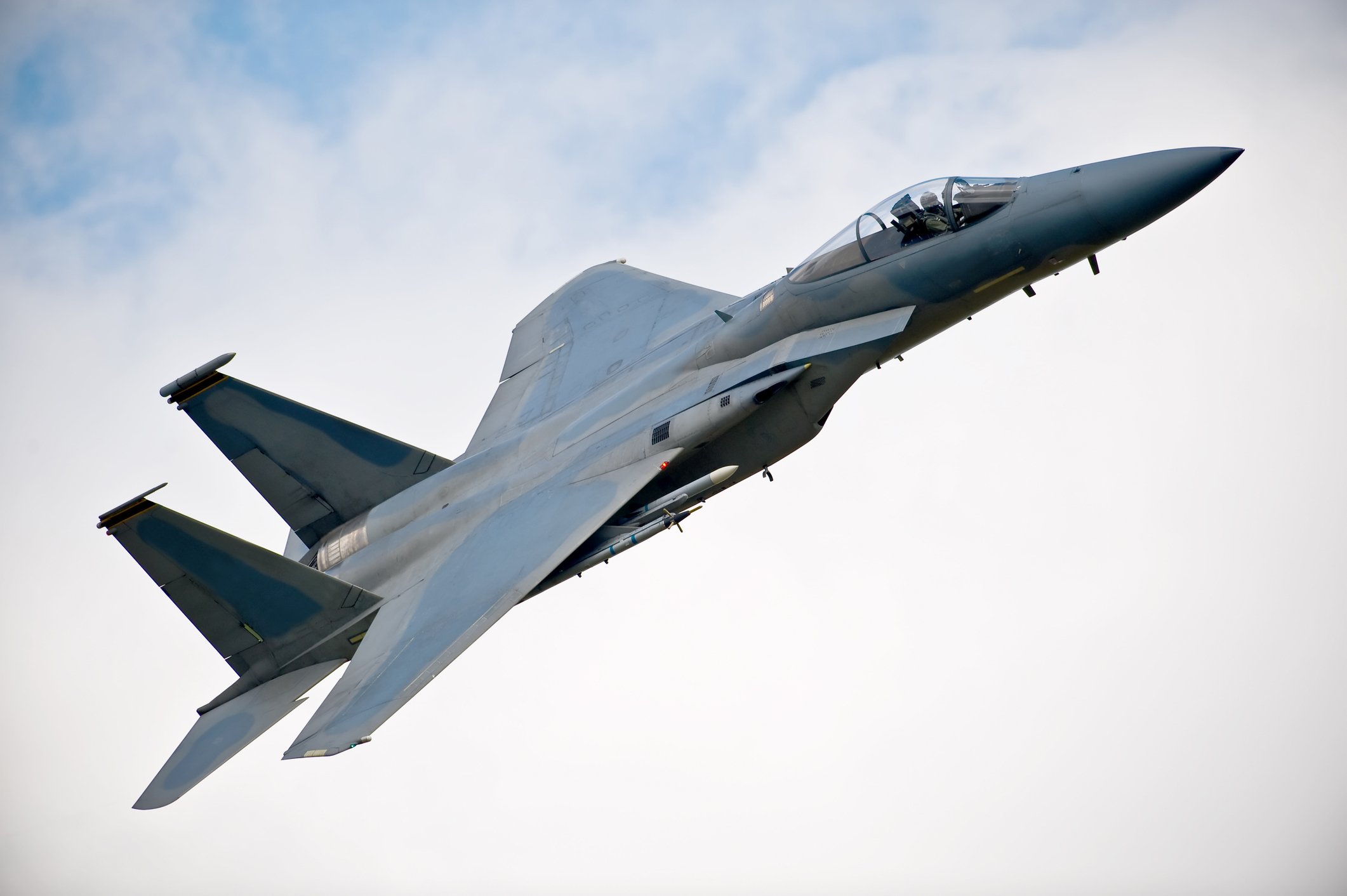"Current orders maintain F/A-18 production through 2016 [but] additional domestic and international orders could extend production ..." -- Boeing spokeswoman Karen Fincutter
"When your home market implodes or terminates, it's tough to sustain the exports."
-- Teal Group vice president Richard Aboulafia

Boeing's best-selling F/A-18 fighter jet. Preferred plane of the Navy's Blue Angels. Source: Wikimedia Commons
This past weekend was a grand one for Boeing (BA +3.15%), no doubt. In a 51-49 vote, the Seattle airplane maker's machinists union voted to accept strict wage controls and abandon its pension program, all in the interests of continuing to build commercial aircraft for Boeing in Washington state. But in an explosive exposé that's not getting nearly the attention it deserves, DefenseNews.com reported over the weekend about significant risks arising for Boeing's other major business -- defense.
Lockheed Martin and other competitors
In a nutshell, here's how the story goes. There are currently five major builders of warplanes in the Western world, and seven fighter jets that they build in significant quantities, namely:
- Saab Gripen
- Eurofighter Typhoon
- Dassault Rafale
- Boeing F-15 Strike Eagle
- Boeing F/A-18 Super Hornet
- Lockheed Martin (LMT +4.72%) F-16 Falcon
- Lockheed F-35 Lightning II
Out of these seven, three rank among the 10 best-selling fighter jets in the world -- respectively, Lockheed's F-16, and Boeing's F-15 and F/A-18. But this could soon change.
Already, Saab's single-engine Gripen is the cheapest fighter jet of the seven, and has begun winning competitions away from Boeing's more expensive offerings. In just the past few months, Gripen was chosen to replace aging Mirages in Brazil's air force (36 jets), upgrade Sweden's existing Gripen fleet (60 upgrades), and outfit Switzerland with 22 new jets.
Meanwhile, at the top end, Lockheed's F-35 recently beat out Boeing's most advanced version of the F-15, the F-15SE -- for a massive $7.7 billion contract.
The F-35 is expected to maintain momentum as Lockheed begins switching customers over from its old line of F-16s to the shiny new F-35 warbirds, and Boeing loses contract after contract to Lockheed's F-35.

As Boeing goes into decline, Lockheed's F-35 looks ascendant. Source: Wikimedia Commons
Grasping at straws
Already, the militaries of Denmark and Canada are planning to upgrade their fighter jet fleets with F-35s. This leaves Boeing engaged in a cutthroat dogfight over price, competing against rival twin-engine fighters from Eurofighter and Dassault for the relatively minuscule sales opportunities available in Australia, Bahrain, Bulgaria, India, Kuwait, Malaysia, Poland, Qatar, Saudi Arabia, and the United Arab Emirates.
Some of which may (or may not) decide to upgrade their air forces over the next few years. India and Saudi Arabia are said to offer the biggest opportunities for fighter jet sales, with anticipated demand for 126 and 72 fighters, respectively. But even with those two in the mix, press reports suggest the total number of planes that may be bought by all these countries -- combined -- adds up to perhaps 420 jets. That's fewer than the 563 F/A-18s that the U.S. Navy alone says it needs for its aircraft carriers.
Boeing... going... gone?
How bad is this situation for Boeing? Already, the Navy is more than halfway through its F/A-18-buying program. The Navy may need to buy as many as 135 of the F-18's sister ships, the EA-18G "Growler" electronic warfare aircraft. But even so, absent other significant contract wins, it looks like Boeing may have to begin thinking of shuttering fighter jet production as early as 2016.
The moral of this story? As Teal Group VP Aboulafia opines: In this world, "there's room for one very successful program, two very modest programs or three desperately flailing programs." Unless it wants to find itself stuck behind door No. 3, it may be time for Boeing to get out of the fighter jet business.

Boeing's F/A-18 Super Hornet. Due to go below-decks for good? Source: Wikimedia Commons







